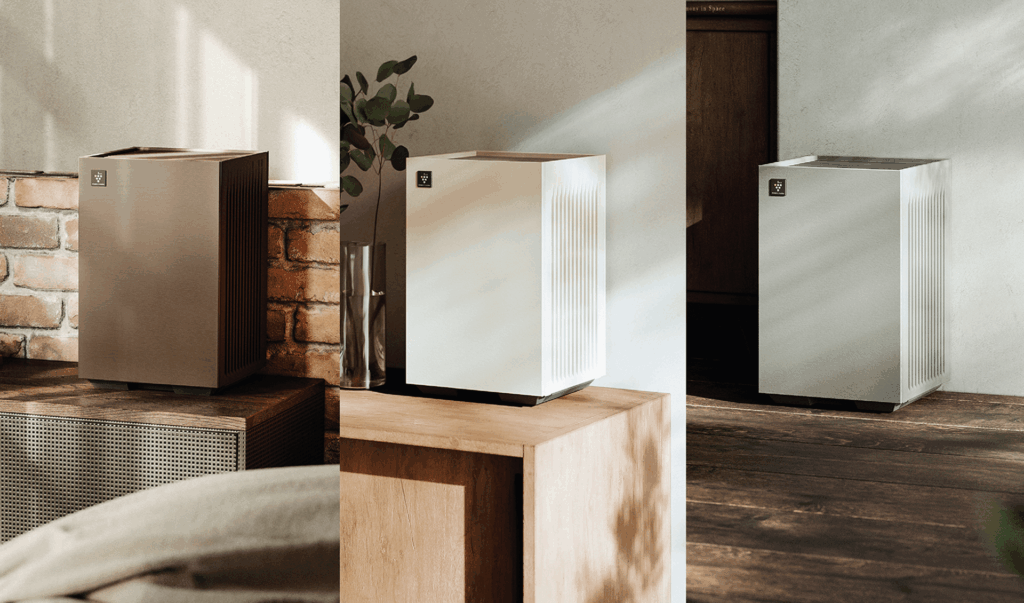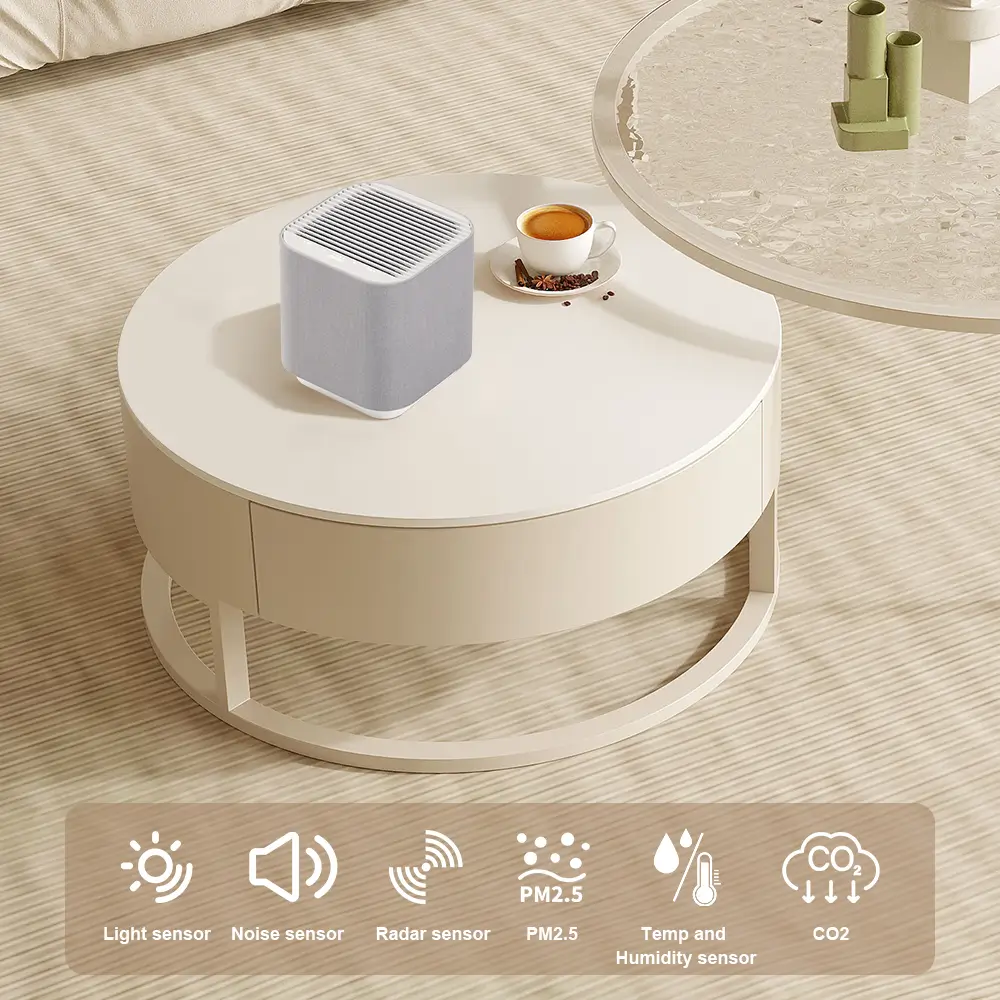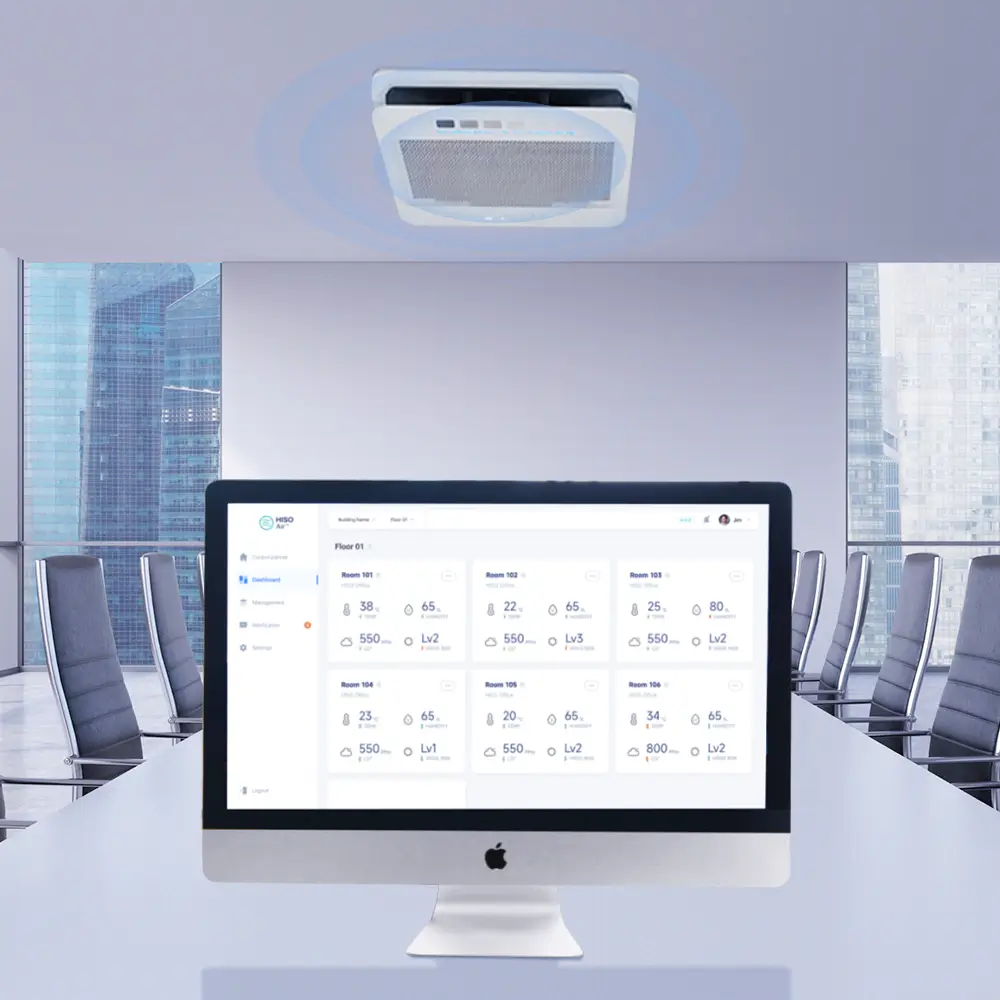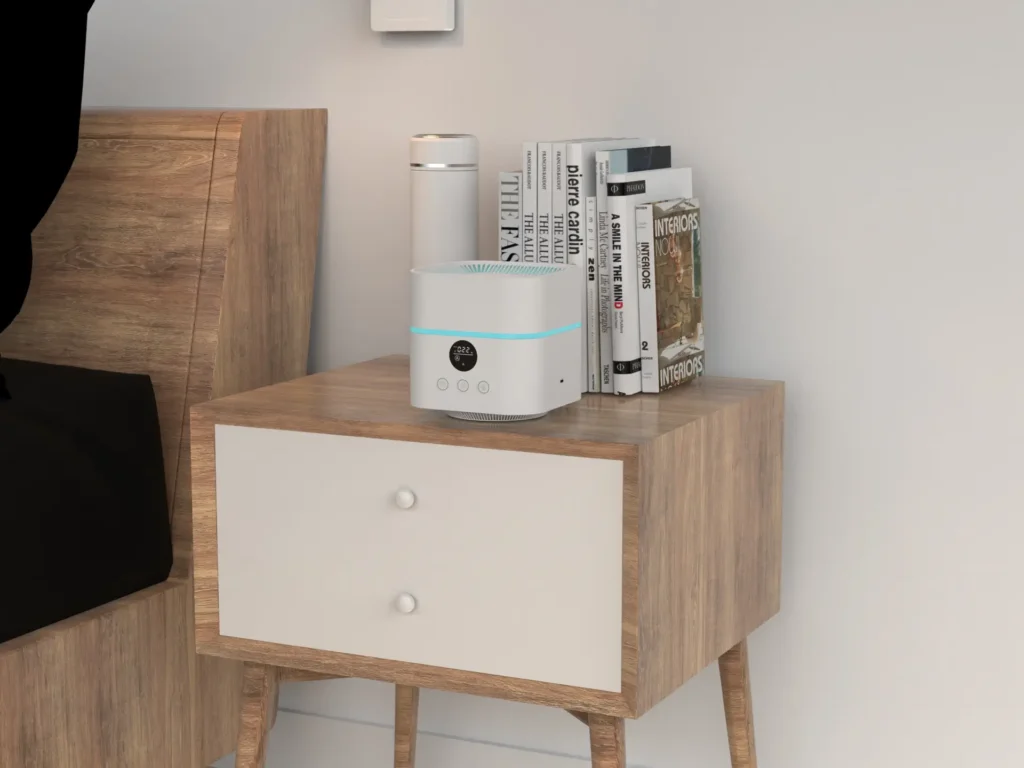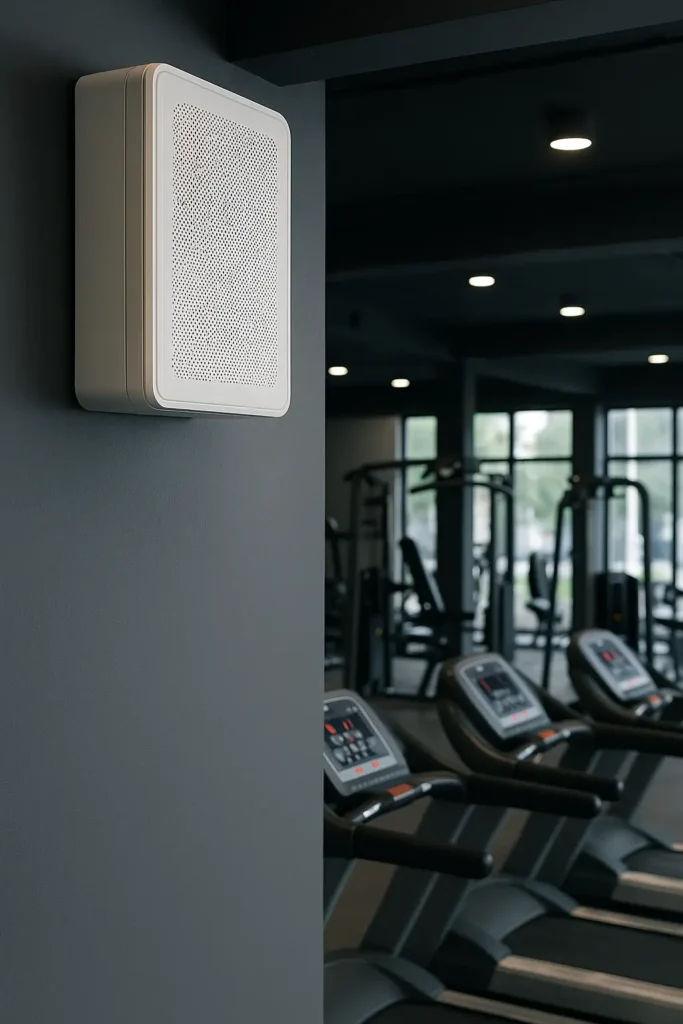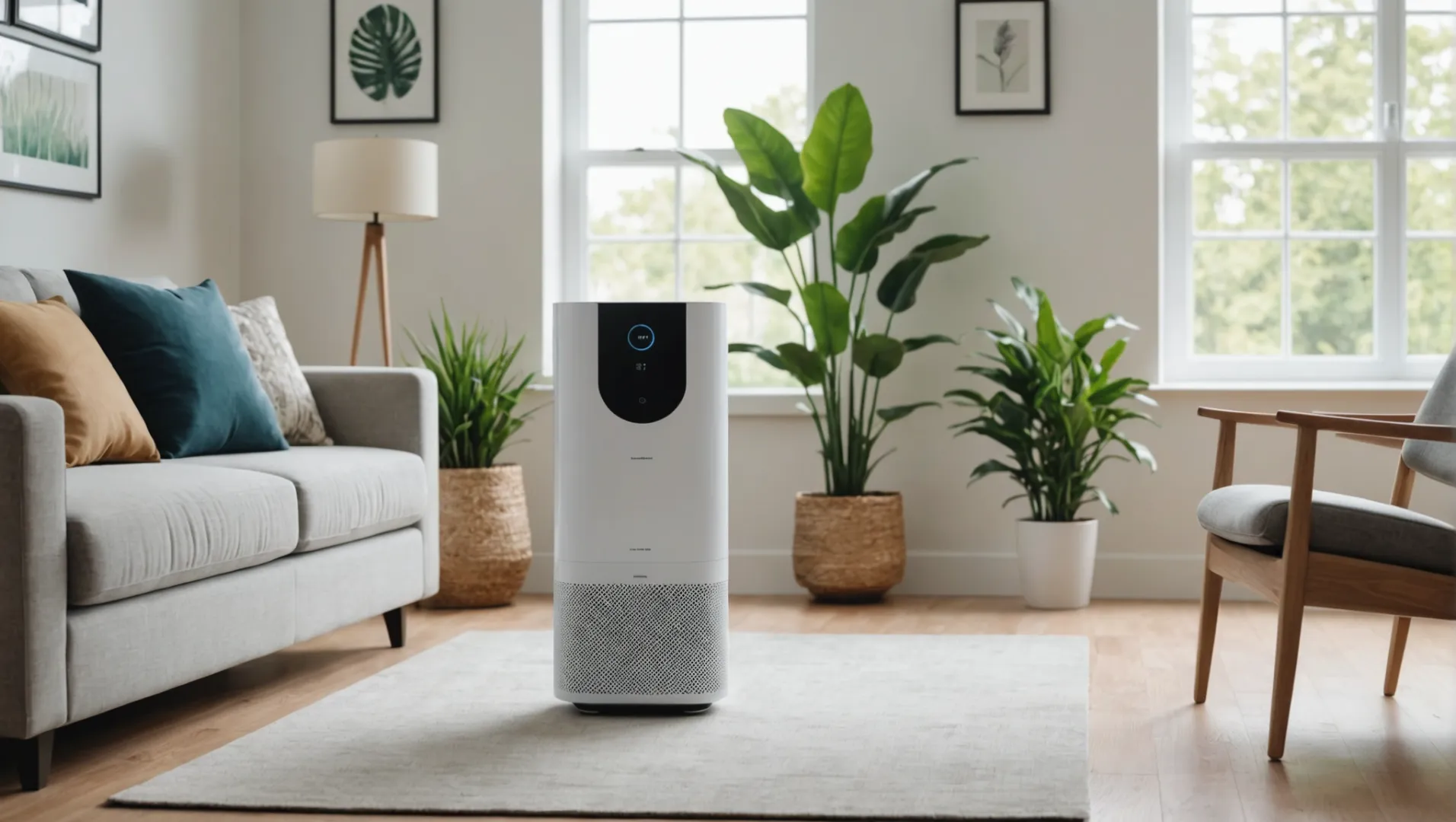
그 어느 때보다 공기질과 건강이 밀접하게 연관되어 있는 요즘, 공기청정기가 공인된 기준을 충족하는지 확인하는 것은 필수적인 일이 되었습니다.
공기 청정기가 다음 규정을 준수하도록 하려면 AHAM 기준에 따라 적절한 청정 공기 공급률(CADR)를 객실 크기에 맞게 선택하고 '2/3 규칙'을 준수하세요. 이를 통해 효율적인 오염 물질 여과와 최적의 공기질을 보장합니다.
잡는 동안 CADR 등급과 '2/3 규칙'은 환상적인 출발점이며, 공기 청정기가 다음과 일치하는지 확인하는 방법에 대해 배울 것이 훨씬 더 많습니다. AHAM 및 관련 표준에 대해 알아보세요. 인증, 새로운 규정, 정보에 입각한 의사 결정을 위한 실용적인 팁을 알아볼 수 있는 이 자세한 가이드를 함께 살펴보세요.
AHAM의 '2/3 법칙'은 최적의 공기청정기 효율을 보장합니다.True
'2/3 법칙'은 정수기 용량과 공간 크기를 일치시켜 효율성을 높이는 방법입니다.
무엇인가요? AHAM '2/3 법칙'은 공기청정기 성능에 어떤 영향을 미치나요?
그리고 AHAM '2/3 법칙'은 실내 공기질에 큰 영향을 미치는 공기청정기 효율에 대한 중요한 가이드라인입니다.
그리고 AHAM '2/3 규칙'에 따르면 깨끗한 공기 전달률(CADR)의 공기청정기 면적(평방 피트)은 실내 면적의 3분의 2 이상이어야 합니다. 이 규칙은 공기청정기의 용량을 실내 크기에 맞춰 효율적인 공기 청정을 보장합니다.
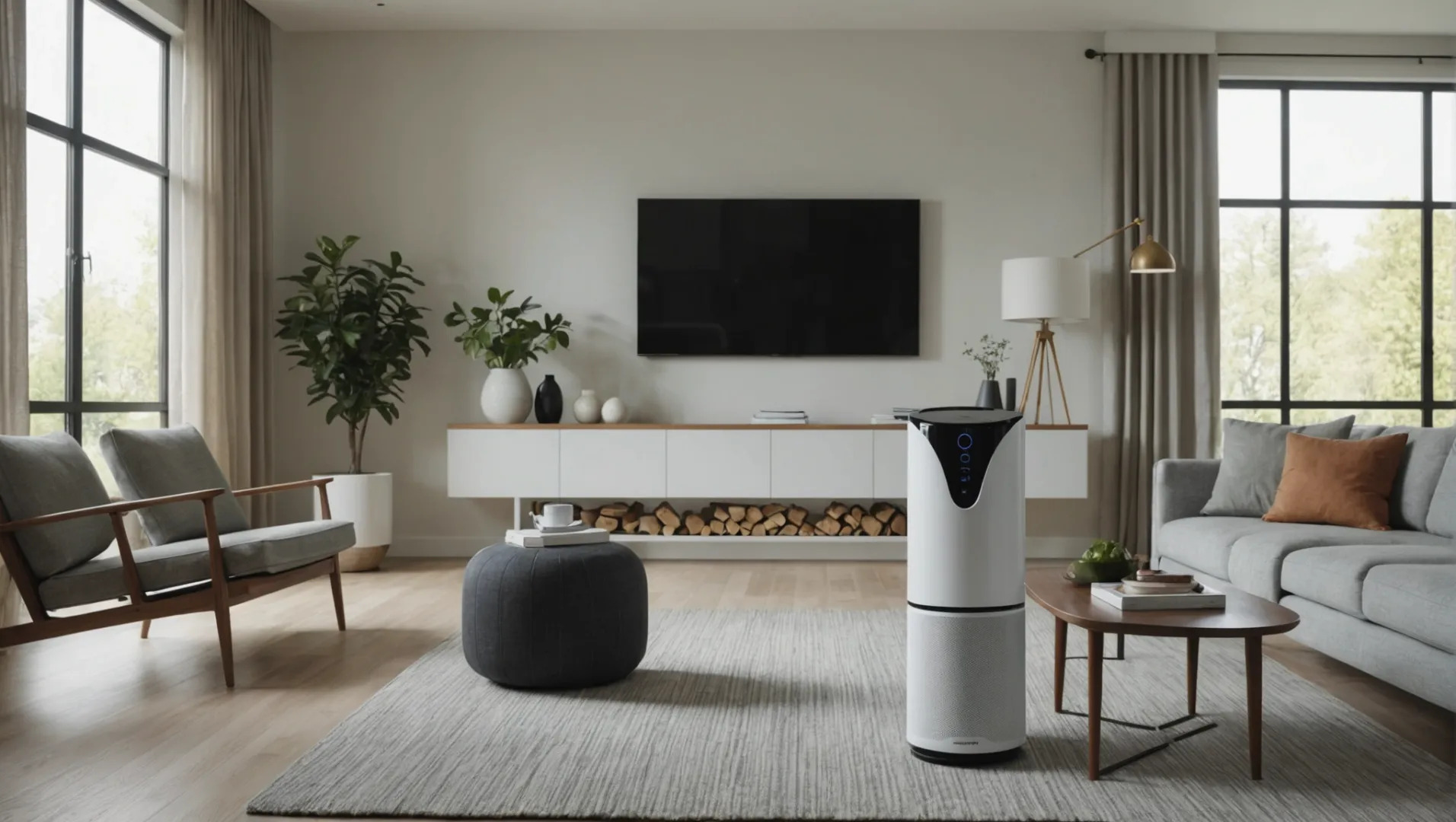
이해 AHAM '2/3 규칙'
그리고 가전제품 제조업체 협회(AHAM)1 는 특정 공간에서 공기청정기의 효과를 판단하는 기준으로 '2/3 법칙'을 정립했습니다. 기본적으로 CADR 는 방 크기의 3분의 2(평방 피트) 이상을 충족해야 합니다. 예를 들어 150평방피트의 방이 있는 경우 공기청정기의 크기는 CADR 이상이어야 합니다. 이 가이드라인은 공기청정기가 공기 중 입자를 효과적으로 줄여 최적의 실내 공기질을 유지할 수 있도록 하기 때문에 매우 중요합니다.
그 이면의 과학 CADR 그리고 그 영향
깨끗한 공기 전달률 (CADR)는 공기청정기가 제공하는 필터링된 공기의 양을 측정합니다. 이는 실내 환경에서 연기, 꽃가루, 먼지 등 특정 오염 물질을 제거하는 청정기의 능력을 반영합니다. 제조업체는 '2/3 법칙'을 준수함으로써 제품의 효율성과 신뢰성을 모두 확보하여 소비자에게 공기 정화 기능에 대한 신뢰를 제공할 수 있습니다.
CADR 등급과 그 중요성
CADR 세 가지 일반적인 오염 물질에 대해 등급이 부여됩니다:
| 오염 물질 | 일반 CADR 효과적인 제거를 위해 필요 |
|---|---|
| 스모크 | 높음 CADR 는 입자 크기가 작기 때문에 필수적입니다. |
| 꽃가루 | 보통 CADR 꽃가루가 더 크고 밀도가 낮기 때문입니다. |
| 먼지 | 꽃가루와 비슷하지만 약간 더 높을 수 있습니다. CADR. |
이러한 등급과 그 중요성을 이해함으로써 소비자는 자신의 필요에 가장 적합한 공기청정기를 선택하여 생활 환경을 안전하고 건강하게 유지할 수 있습니다.
표준 준수가 중요한 이유
다음 규정 준수 AHAM 표준은 품질과 성능을 보장할 뿐만 아니라 다음과 같이 진화하는 규정에도 부합합니다. 에너지 스타 및 DOE 인증2. 이러한 인증은 공기 청정기가 에너지 효율적이며 엄격한 정부 지침을 충족한다는 것을 의미하므로 소비자는 더욱 안심할 수 있습니다.
곧 시행될 새로운 규정이 등장함에 따라 DOE 규정 준수 요건이 2024년에 시행됨에 따라 이러한 표준을 유지하는 방법을 이해하는 것이 더욱 중요해졌습니다. 제품 설계 및 규정 준수에 영향을 미칠 수 있는 법률의 변경 사항에 대한 정보를 지속적으로 파악하는 것이 중요합니다.
궁극적으로 AHAM '2/3 법칙'을 통해 제조업체와 소비자 모두 공기 정화 솔루션에 대해 정보에 입각한 결정을 내릴 수 있어 더 나은 공기질과 더 건강한 생활 공간에 기여할 수 있습니다.
AHAM '2/3 규칙'에 따르면 CADR은 객실 크기의 3분의 2가 되어야 합니다.True
이렇게 하면 공기청정기가 실내 공기를 효과적으로 정화할 수 있습니다.
'2/3 법칙'은 공기청정기 효율과는 무관합니다.False
이 규칙은 공기청정기가 공기를 얼마나 잘 정화할 수 있는지에 직접적인 영향을 미칩니다.
왜 CADR 공기청정기 규정 준수가 중요한가요?
이해 CADR 는 공기청정기가 실내 공기를 효과적으로 정화할 수 있도록 하는 핵심 요소입니다.
CADR또는 청정 공기 전달률은 공기청정기의 오염 물질 제거 효율을 측정합니다. 이는 미국 가전제품 제조업체 협회(AHAM), 디바이스가 효과적이고 소비자의 기대에 부응하도록 보장합니다.
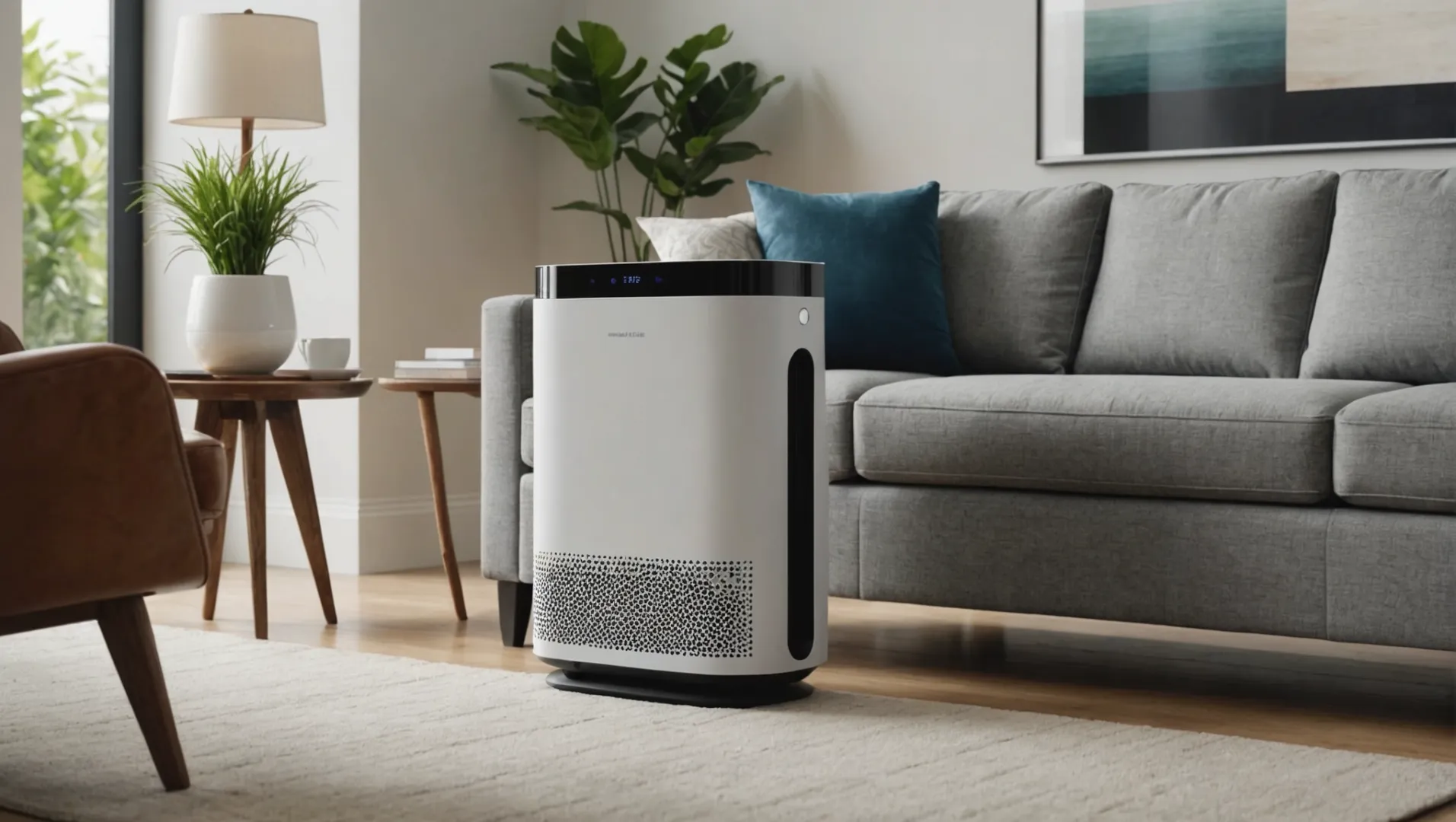
의 역할 CADR in 대기 질
깨끗한 공기 전달률 (CADR)는 공기청정기가 공기에서 입자를 얼마나 빨리 제거할 수 있는지를 나타내는 중요한 지표입니다. 분당 입방 피트(CFM)로 표시되며 필터링된 공기의 양을 나타냅니다. 높을수록 CADR 숫자는 더 빠른 오염 물질 제거, 향상된 공기 품질3 크게 증가했습니다.
CADR 는 공기청정기의 성능을 평가할 때뿐만 아니라 업계 표준을 충족하는지 확인하는 데에도 필수적입니다. 공기청정기의 AHAM 사용 CADR 를 통해 공기청정기를 테스트하고 검증하여 소비자에게 신뢰할 수 있는 정보를 제공합니다.
회의 AHAM 표준
다음 사항을 준수하려면 AHAM 표준을 준수하기 위해 제조업체는 자사 제품이 특정 CADR 값을 기준으로 합니다. '2/3 법칙'에 따르면 공기청정기의 공기 정화율은 CADR 평방 피트 단위로 방 면적의 3분의 2 이상에 해당합니다. 예를 들어, 150평방피트의 방에서 CADR 는 최소 100 CFM이어야 합니다.
| 객실 크기(평방 피트) | 최소 CADR (CFM) |
|---|---|
| 100 | 67 |
| 150 | 100 |
| 200 | 133 |
이러한 규정 준수를 통해 공기청정기는 연기, 꽃가루, 먼지 등의 오염 물질을 효율적으로 제거하여 건강한 실내 환경을 유지할 수 있습니다.
CADR 새로운 규정
Beyond AHAM 표준, AHARE 241과 같은 새로운 규정은 시간당 최소 6번의 공기 교환을 유지하는 데 중점을 둡니다(ACH). 이 규정 준수로 인해 CADR 건강과 생산성을 위해 최적의 공기질을 유지하는 것이 중요한 상업 공간에서는 더욱 중요합니다.
다음 사항에 집중하는 제조업체 에너지 스타4 인증은 또한 다음을 찾을 수 있습니다. CADR 관련 규정은 공기청정기의 에너지 효율에 영향을 미치기 때문입니다. 2024년부터 미국 시장에 출시되는 모든 공기청정기는 미국 에너지부(DOE) 표준의 중요성을 더욱 강조하며, 다음과 같은 사항을 더욱 강조합니다. CADR 규정 준수와 시장 경쟁력을 위해
CADR이 높을수록 오염 물질 제거 속도가 빨라집니다.True
CADR은 공기청정기가 공기를 정화하는 속도를 측정하는 것으로, 수치가 높을수록 제거 속도가 빠르다는 의미입니다.
AHAM 표준에서는 CADR을 평방 피트 단위의 공간 크기와 동일하게 요구합니다.False
AHAM 표준에 따르면 CADR은 평방 피트 단위로 방 면적의 3분의 2가 되어야 합니다.
에너지 스타 및 DOE 인증이 공기청정기에 영향을 미치나요?
환경을 생각하는 오늘날의 세상에서 지속 가능한 선택을 하려면 공기청정기에 대한 인증을 이해하는 것이 중요합니다.
에너지 스타 및 DOE 인증은 공기청정기가 에너지 효율이 높고 미국 표준을 충족한다는 것을 보장합니다. 이러한 인증은 전기 비용을 절감할 뿐만 아니라 향후 규정 준수를 보장하므로 공기청정기를 더욱 현명한 투자로 만들 수 있습니다.
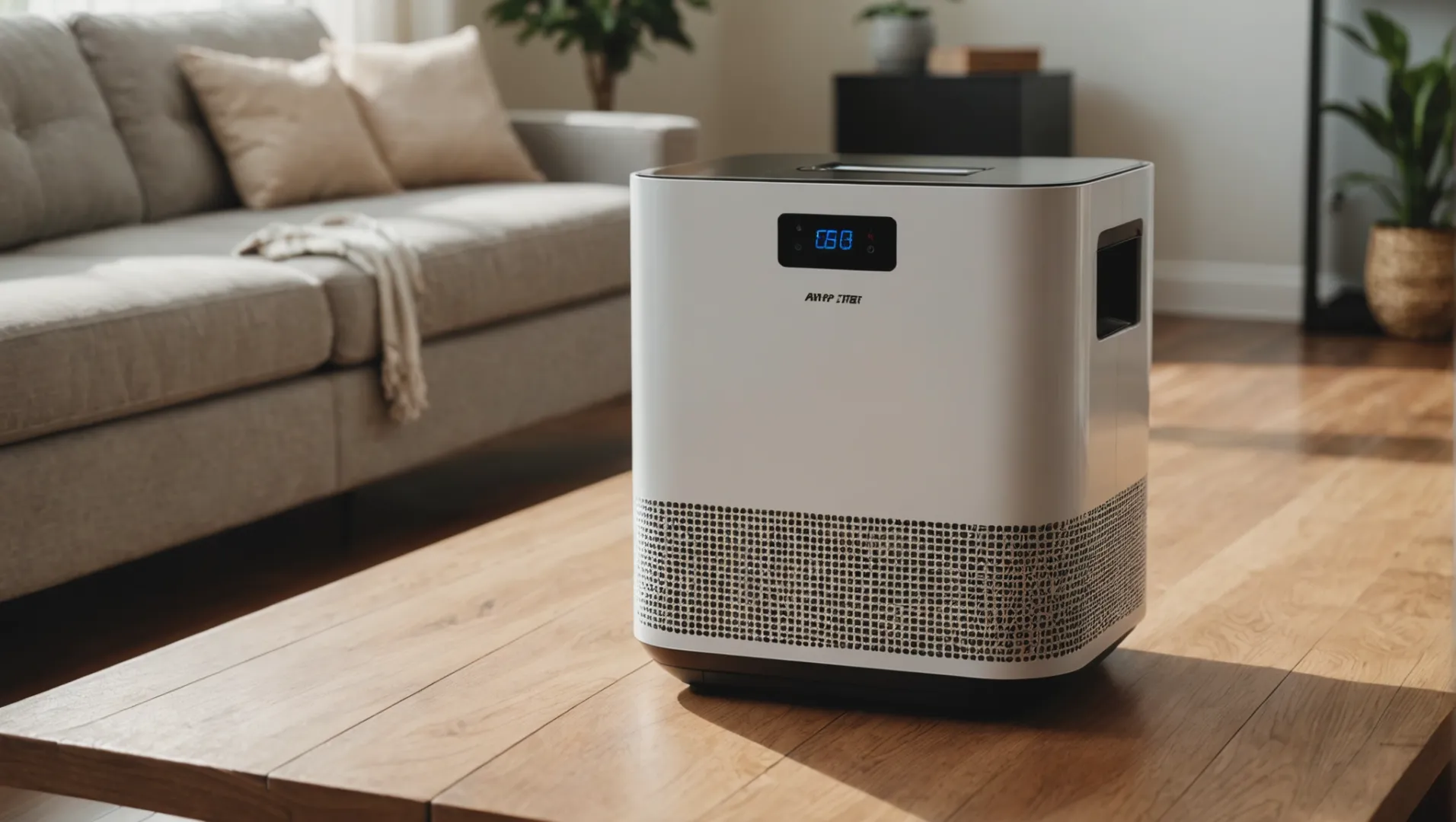
에너지 스타 인증 이해
에너지 스타는 에너지 효율성에 대한 신뢰할 수 있는 상징입니다. 공기청정기와 같은 가전제품이 특정 에너지 성능 표준을 충족하거나 초과한다는 것을 의미합니다. 공기청정기의 경우 성능 저하 없이 효율적으로 작동한다는 의미입니다. 이 인증은 특히 공기 질이 우려되는 환경에서 지속적으로 작동하는 경우 에너지 요금을 크게 절감할 수 있습니다.
선택하면 에너지 스타 인증 공기 청정기5를 통해 소비자는 에너지 소비를 줄여 지속 가능성 목표에 부합하고 탄소 발자국을 줄일 수 있습니다.
DOE 인증: 2024년부터 꼭 필요한 인증
에너지부(DOE) 인증이 2024년부터 의무화되어 업계 전반의 에너지 효율성에 대한 기준이 될 것입니다. 이 인증을 통해 미국 시장에 출시되는 모든 공기청정기는 최소 효율 기준을 충족해야 하며, 소비자는 더 많은 전력을 소비하는 제품을 피할 수 있습니다.
DOE-인증 제품은 엄격한 조건에서 테스트를 거쳐 최소한의 에너지 사용으로 높은 성능을 제공합니다. 이는 환경에 대한 관심이 높아지고 소비자들이 보다 지속 가능한 제품을 요구함에 따라 더욱 중요해지고 있습니다.
소비자 선택에 미치는 영향
이러한 인증을 통해 소비자는 정보에 입각한 구매 결정을 내릴 수 있습니다. 에너지 소비 감소로 인한 잠재적인 공공요금 절감 효과도 상당할 수 있습니다. 또한 DOE 인증이 의무화됨에 따라 비인증 모델을 구매하는 것은 곧 불가능해질 수 있습니다.
제조업체의 경우 에너지 스타 및 DOE 표준6 브랜드 평판을 높일 뿐만 아니라 규제 요구를 충족하여 시장 기회를 확대할 수 있습니다.
업계 시사점
이러한 인증은 또한 업계 내 기술 발전을 촉진합니다. 제조업체는 성능에 타협하지 않는 에너지 효율적인 설계에 중점을 두고 혁신을 추구합니다. 그 결과, 공기청정기는 더욱 정교해지고 전력 소비는 줄이면서 향상된 기능을 제공할 것으로 기대할 수 있습니다.
결론적으로 이러한 인증은 처음에는 단순한 라벨처럼 보이지만, 소비자 행동을 형성하고 제조 공정에 영향을 미치며 궁극적으로 환경에 도움이 되는 등 그 영향력은 막대합니다.
에너지 스타 인증으로 에너지 비용을 절약할 수 있습니다.True
에너지 스타 인증 제품은 에너지 효율이 높도록 설계되어 전기 비용을 절감할 수 있습니다.
2024년부터 공기청정기에 대한 DOE 인증은 선택 사항입니다.False
2024년부터 미국 내 모든 공기청정기에 대해 DOE 인증이 의무화됩니다.
AHARE 241 규정 준수란 무엇이며 왜 신경 써야 하나요?
AHARE 241 규정 준수는 공기 정화 표준의 중추적인 변화를 의미하며, 제조업체와 소비자 모두에게 영향을 미칩니다.
AHARE 241 규정 준수에 따라 공기청정기는 시간당 최소 6번의 공기 교환을 보장해야 합니다(ACH)를 실내 및 상업 공간에 적용합니다. 이 표준은 최적의 실내 공기질을 유지하는 데 매우 중요하며, 특히 2024년 이후 미국 공기청정기 시장에서 중요한 요소가 될 것으로 예상됩니다.
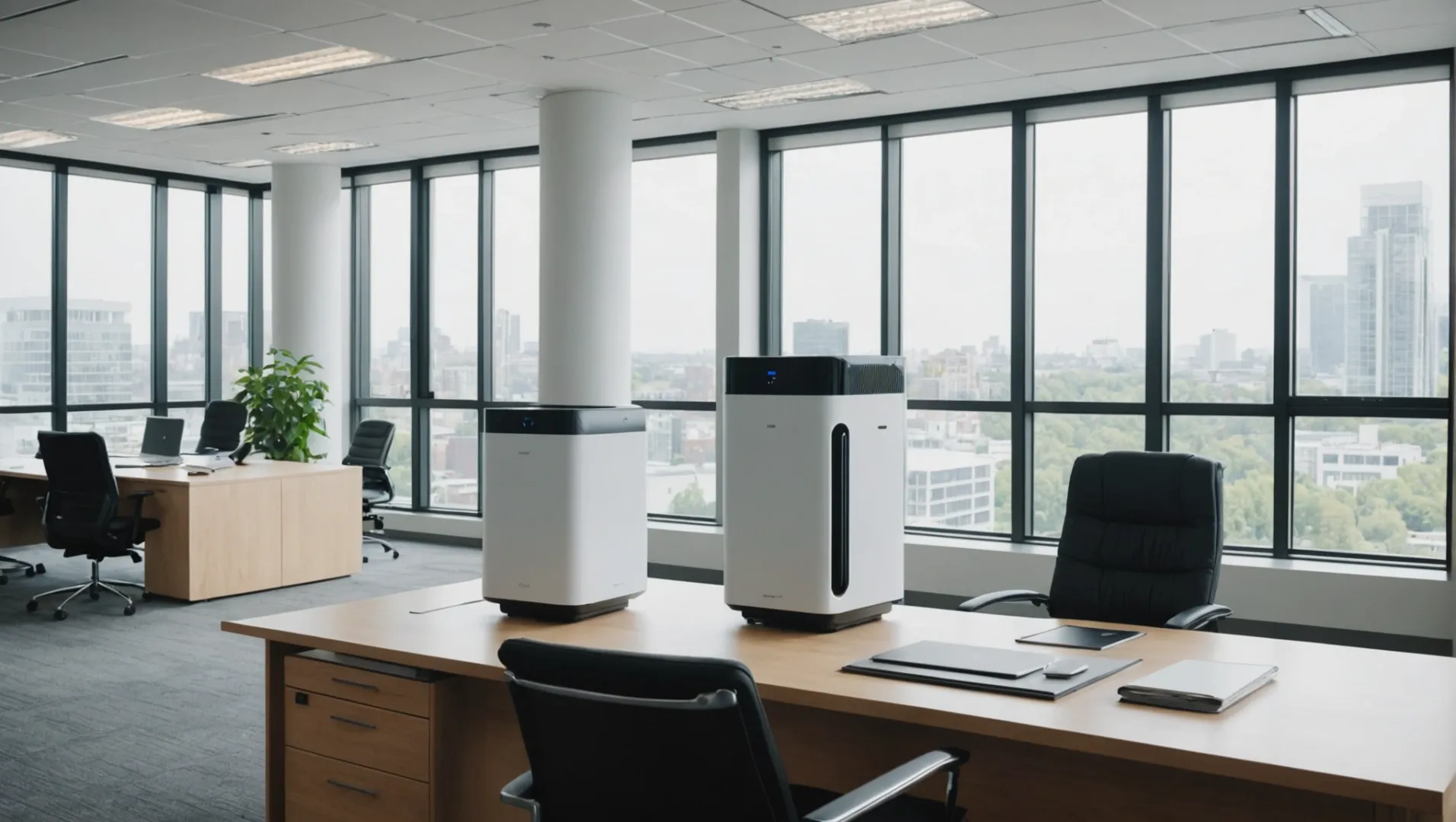
AHARE 241 규정 준수 이해
AHARE 241 규정 준수는 다양한 환경에서 공기청정기를 설계하고 활용하는 방식을 혁신하는 것을 목표로 하는 새로운 표준입니다. 이 규정의 핵심 요건은 시간당 최소 6번의 공기 교환을 달성하는 것입니다(ACH)를 주거 공간, 상업용 건물, HVAC 시스템 등 모든 공간에서 측정합니다. 이 벤치마크는 이러한 공간의 공기가 지속적으로 새로워지도록 하여 공기 중 오염 물질의 농도를 크게 줄입니다.
이 기준의 도입은 실내 공기질에 대한 인식이 사상 최고조에 달한 시점에 이루어졌습니다. 코로나19 팬데믹으로 인해 깨끗한 실내 공기의 중요성이 부각되면서 규제 기관은 더욱 엄격한 기준을 요구하고 있습니다. 따라서 제조업체와 소비자 모두에게 AHARE 241 규정 준수는 중요한 요소가 될 것입니다.
제조업체와 소비자를 위한 시사점
제조업체에게 AHARE 241 규정 준수는 6가지 기준을 충족할 수 있는 보다 효율적인 공기청정기를 만들기 위해 연구 개발에 투자하는 것을 의미합니다. ACH 요구 사항을 충족해야 합니다. 여기에는 기존 모델을 재설계하거나 공기 흐름과 여과 기능을 향상시키는 새로운 기술을 개발하는 것이 포함될 수 있습니다.
특히 미국 소비자들에게 AHARE 241 준수 여부는 곧 공기청정기를 구매할 때 주요 고려 사항이 될 것입니다. 2024년 이후 새로운 법안이 시행될 예정이므로 소비자는 이 표준을 충족할 뿐만 아니라 에너지 스타 및 DOE 에너지 효율을 위해
공기 정화의 미래
AHARE 241 규정 준수를 향한 변화는 공기 정화 업계의 광범위한 트렌드를 의미합니다. 더 깨끗한 실내 환경에 대한 수요가 증가함에 따라 공기 정화 기술 혁신의 기회도 커지고 있습니다. 상업용 공기 청정기7 는 새로운 법안과 안전하고 건강한 실내 환경 유지에 대한 관심이 높아짐에 따라 상당한 성장을 보일 것으로 예상됩니다.
요약하자면, 공기 정화 시장에 종사하는 모든 사람에게 AHARE 241 규정 준수에 대한 이해와 도입은 필수적입니다. 규정보다 앞서 나가려는 제조업체든 최적의 실내 공기질을 보장하려는 소비자든, 이 규정은 이러한 목표를 달성할 수 있는 명확한 경로를 제공합니다.
AHARE 241은 시간당 6번의 공기 교환이 필요합니다.True
이 표준에 따르면 공기청정기는 모든 공간에서 6개의 ACH를 달성해야 합니다.
2024년 이후에는 AHARE 241이 미국 소비자에게 영향을 미치지 않습니다.False
2024년 이후에는 AHARE 241이 미국 공기청정기 선택에 중요한 기준이 될 것입니다.
결론
탐색 AHAM 규정 준수는 효과적인 공기 정화를 보장하는 핵심 요소입니다. 이해함으로써 CADR인증 및 새로운 표준을 통해 규제를 앞서가면서 공기질을 개선할 수 있습니다. 여러분의 건강과 공기 정화의 미래를 위해 현명하게 투자하세요.
-
이 규칙이 공기청정기 성능을 최적화하는 방법을 알아보세요: AHAM의 2/3 규칙을 따르세요: 항상 실내 면적의 2/3 이상에 담배 연기 CADR이 있는 장치를 사용해야 합니다. 예를 들어, 10 피트 x 12 피트 방 - 120 평방 피트 ... ↩
-
이러한 인증이 어떻게 효율성과 규정 준수를 향상시키는지 알아보세요: 에너지 스타 인증을 받은 실내 공기 청정기는 표준 모델보다 에너지 효율이 약 25% 더 높기 때문에 소비자는 연간 약 120kWh, 연간 $18의 에너지를 절약할 수 있습니다. ↩
-
CADR이 실내 공기질과 청정기 효율에 미치는 영향 이해 ..: CADR 등급이 높은 공기청정기를 선택하면 먼지, 꽃가루, 연기 등 오염 물질의 공기 정화에 효과적이라는 것을 알 수 있습니다. ↩
-
공기청정기에 대한 에너지 스타 혜택 및 요구 사항에 대해 자세히 알아보세요: 에너지 스타 인증을 받은 실내 공기 청정기는 표준 모델보다 에너지 효율이 약 25% 더 높기 때문에 소비자는 연간 약 120kWh, 연간 $18를 절약할 수 있습니다. ↩
-
에너지 스타 모델이 비용 효율적이고 친환경적인 이유 알아보기 ..: 파란색 에너지 스타 라벨이 부착된 실내 공기 청정기는 표준 모델보다 에너지 효율이 27% 더 높으며 제품 수명 기간 동안 $130 이상을 절약할 수 있습니다. ↩
-
인증이 어떻게 시장 기회와 브랜드 평판을 높이는지 알아보세요: 에너지 스타 인증을 받은 건물은 전국적으로 비슷한 건물보다 평균 35% 적은 에너지를 사용합니다. 비용 절감 효과도 상당할 수 있습니다. ↩
-
2024년 이후 상업용 공기 정화의 확대되는 기회 알아보기: 상업 공간의 공기질 개선 - 공기 청정기는 먼지, 꽃가루, 곰팡이 포자, 바이러스, 박테리아, 휘발성 유기 화합물 및 악취를 제거할 수 있습니다. ↩


